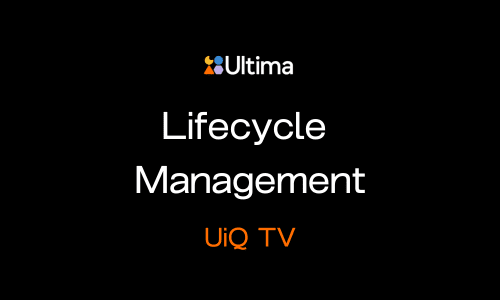UiQ TV: Unlocking the Power of Commvault Clean Rooms for Cyber Resilience
Join Matt Hudson, CTO, and Mark Lucas from Commvault as they delve into the capabilities of Commvault Clean Rooms and their pivotal role in cyber resilience.
Learn more about our disaster recovery servicesIn this video, we explore:
- Commvault Clean Rooms: What they are and how they provide a unique recovery solution.
- Single Pane of Glass: Managing your data recovery through a unified interface for both on-premises and cloud environments.
- Separation of Control Plane: Ensuring flexibility and security by decoupling the management plane from customer environments.
- Proactive Cyber Defence: New technologies like ThreatWise for early detection and response to potential attacks.
Discover how Commvault’s clean room technology delivers unique cyber resilience capabilities that set it apart from competing solutions in this technical deep-dive.
Unlike traditional disaster recovery approaches that assume your management infrastructure remains trustworthy, Commvault’s clean room architecture features critical separation between the control plane and data plane, enabling recovery operations to proceed even when attackers have compromised your primary environment.
This segregation allows organizations to manage recovery from an isolated, protected interface that cannot be accessed or manipulated by ransomware, ensuring you maintain recovery capability regardless of how deeply attackers have penetrated your production systems. The platform’s flexibility extends to storage architecture choices, avoiding vendor lock-in by supporting diverse storage solutions through a unified management interface that simplifies operations while maximizing options.
Beyond technology capabilities, Mark emphasizes the proactive cyber resilience mindset that clean room technology enables and demands. Organizations must move beyond hoping their backups work to rigorously testing recovery procedures under realistic attack scenarios, including loss of Active Directory, compromised backup administrators, and encrypted management systems. This means regularly simulating worst-case ransomware situations to validate that your team can actually execute recovery when critical systems are unavailable and normal processes are disrupted.
The conversation clarifies the crucial distinction between disaster recovery, which focuses on infrastructure failures, and cyber recovery, which assumes an adversarial environment where attackers have deliberately targeted your recovery capabilities. Understanding this difference fundamentally changes how organizations approach resilience planning, moving from passive backup strategies to active defense of recovery capability.
Commvault’s clean room represents a market-leading approach to cyber recovery that combines technical innovation with operational discipline. The single management interface consolidating multiple protection capabilities reduces complexity while the segregated control plane ensures recovery operations can proceed independently from compromised production environments.
For organizations serious about ransomware resilience, implementing clean room technology alongside regular recovery testing and comprehensive incident planning transforms theoretical disaster recovery plans into operational cyber recovery capabilities that function when attacks occur.




